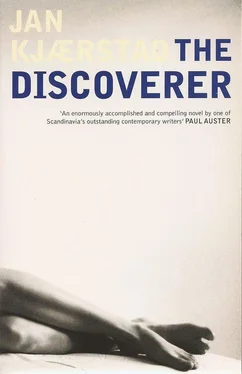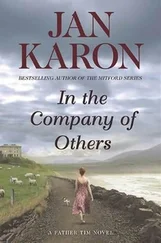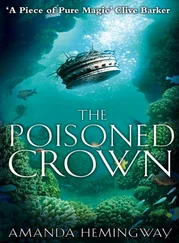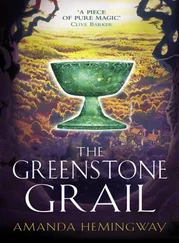Jan Kjaerstad - The Discoverer
Здесь есть возможность читать онлайн «Jan Kjaerstad - The Discoverer» весь текст электронной книги совершенно бесплатно (целиком полную версию без сокращений). В некоторых случаях можно слушать аудио, скачать через торрент в формате fb2 и присутствует краткое содержание. Год выпуска: 2009, Издательство: Arcadia Books, Жанр: Современная проза, на английском языке. Описание произведения, (предисловие) а так же отзывы посетителей доступны на портале библиотеки ЛибКат.
- Название:The Discoverer
- Автор:
- Издательство:Arcadia Books
- Жанр:
- Год:2009
- ISBN:нет данных
- Рейтинг книги:5 / 5. Голосов: 1
-
Избранное:Добавить в избранное
- Отзывы:
-
Ваша оценка:
- 100
- 1
- 2
- 3
- 4
- 5
The Discoverer: краткое содержание, описание и аннотация
Предлагаем к чтению аннотацию, описание, краткое содержание или предисловие (зависит от того, что написал сам автор книги «The Discoverer»). Если вы не нашли необходимую информацию о книге — напишите в комментариях, мы постараемся отыскать её.
The Discoverer — читать онлайн бесплатно полную книгу (весь текст) целиком
Ниже представлен текст книги, разбитый по страницам. Система сохранения места последней прочитанной страницы, позволяет с удобством читать онлайн бесплатно книгу «The Discoverer», без необходимости каждый раз заново искать на чём Вы остановились. Поставьте закладку, и сможете в любой момент перейти на страницу, на которой закончили чтение.
Интервал:
Закладка:
It is a relief to be on board the Voyager, not only because of the crew’s optimism, their young minds, but because they are working on a project with which I have such a lot of sympathy — a combination, no less, of the world’s two greatest industries: travel and entertainment. Life on board is not exactly as I had imagined it. Granted, they do play computer games on laptops, but they are just as likely to be found playing chess on an actual board. They know as much about the Nimzo-Indian opening as they do about Myst. They are comfortable with everything from an old Commodore 64 computer to antiquarian books, from rococo balls and foxtrots to rave parties and trip hop music. They visit Net cafés, swathed in Palestinian keffiyehs .
I can see, of course, that they also have their problems to contend with, individually and as a group — oh yes, there can be friction on board! — but right now, at the stage I am at, I am much more interested in their positive than their negative sides. Hanna, for example — who, with her Korean features, sometimes reminds me of Bo Wang Lee — is also a qualified architect. She has worked on what was, at that time, the busiest building site in Europe, Berlin’s Potsdamer Platz, and is still liable to refer to things she learned there, theories on town planning, when discussing the OAK Quartet’s own ideas. The other evening the four of them suddenly got onto the subject of the world’s biggest dam-building project, the Three Gorges Dam in China. Carl had actually been there and seen the work in progress. I cannot believe how much they have managed to do in such a short space of time.
And then there is their music. Not by chance have they called themselves a quartet. They can sing just about anything in perfect four-part harmony. Martin plays a whole range of instruments, from the mouth organ to the didgeridoo, the long pipe traditional to the Australian aborigines. He can also play Joni Mitchell’s songs, including the tricky ‘Song for Sharon’ from Hejira with the capo in just the right position and the guitar tuned exactly as the writer herself has it. I mean, not even I can do that, and I’ve listened to my fair share of Joni Mitchell — I, who did, after all, insert an F sharp/A sharp chord on the piano at the beginning of the fifth bar of ‘Gentle Jesus meek and mild’, a harmonic transition which, if I am lucky, is the only thing likely to get me into heaven.
It is evening. I am sitting on the balcony of our hotel room with a whisky. The weather has cleared up. I look across to the other side of the fjord. I was over that way once, to the west of Vik, west of Arnafjord. I saw something there, a man with his head in a woman’s lap, a sight I will never forget.
It is still light. The air is balmy. It is the sort of evening that causes me to remember. Takes me back to the inescapable centre of my life. To the living room and Margrete’s body. A dead wife clad in my own dressing gown. The spring evening outside the windows; a yellow, then a reddish glow on the horizon. I stood there staring. For how long I do not know. I realised that, unconsciously, I had been holding my breath. For more than a minute. For much more than a minute. As if I was diving for her, hunting for a pale glint of gold in the mud, that flash of gold which sometimes flickered in her eyes. I think I was making a last, desperate effort to save Margrete’s life. If, that is, it was not — again — my own.
Then, as if it were the only natural thing to do, I sat down next to her. I lifted Margrete’s head onto my lap. For a long time I sat like this, sat with her head in my lap. It reminded me of something. Reminded me very much of something else. I had once seen two people sitting exactly like this, in a wild and desolate landscape, a man and a woman on an almost luminously green grassy bank by a lake. The man had been lying with his head in the woman’s lap. The water was like glass, mirroring the encircling mountains. It could have been a happy scene, set in an almost impossibly beautiful landscape. Then all at once the woman began to sing, with a large orchestra behind her, and the whole scene altered character due to the deep solemnity of the music. The woman sang, she sang in German, she sang ‘Mild und leise’ from the end of the third and final scene in the third and final act of Richard Wagner’s revolutionary opera Tristan and Isolde ; sang out of great pain, great love, great sorrow. Her lover, the man whose head lay in her lap, was dead, and she too was close to death. She sat there, surrounded on all sides by tall cliffs, looking almost as though she were shut inside an enormous cauldron which, because of the singing, the music behind it, seemed to be full of seething passions.
I did not see it when we were filming the scene. Only afterwards, when I was looking at it on the screen, that shot, the posing, was I struck by how much it reminded me of an episode from my youth: Margrete with my head in her lap, in her garden at Grorud.
No other programme in the Thinking Big series was as easy to make as the one on Kirsten Flagstad. It made itself. Right from the start I knew that I had to avoid depicting her as she appears in a well-known film clip, kitted out with chainmail and wingéd helmet and spear, her hair fluttering in the breeze from a wind machine as she sings ‘Hojotoho! Hojotoho!’ from The Valkyrie , the sort of set-up which, magnificent voice or no, only served to confirm all of the prejudices which so many Norwegians had about opera. I wanted to break this pattern by filming in the outdoors, to bring opera to life, you might say. Not until later did I realise that I had built the whole programme around one of the biggest operatic clichés of all: a person singing as they die.
I had no difficulty in deciding which incident from Flagstad’s life to highlight. It had to be her stupendous breakthrough at the Metropolitan Opera House in New York in February 1935, performances which turned her into an international star overnight. And since she could be said to have made two debuts, I chose the second one, made four days after the first, when she sang Isolde — which was also the part she was to sing more than any other in her career. The audience is reported to have been in ecstasies; they had apparently stormed the stage at the end of the second act. And it truly was a sensation. For the first time, a Met audience heard the voice which, some said, Wagner must have heard in his subconscious when he wrote the opera: possibly the most dramatic soprano of all time — the Voice of the Century as she was also called. The way I saw it, I was not making a programme about Kirsten Flagstad the woman, but about her lungs. About breathing. Because that was the secret: to be capable of turning air into resonance, into music. Into images. When you heard Flagstad sing, you thought of rivers of gold and floods of light.
I had listened to this opera again and again and was in no doubt that I had to concentrate on the ending, the ‘love-death’. When I mooted the possibility of shooting outdoors, of finding a dramatic natural setting, one of the cameramen, who hailed from Vik in Sogn, suggested filming the scene in what he called ‘Sognefjord’s best kept secret’ — to which, sadly, more than a million Norwegians were now to be made privy — namely Finnabotn at the head of Finnafjord. And when we arrived there by boat I knew with every fibre of my being that this was the place. Something about the landscape at Finnabotn told me this was the chance of a lifetime. One almost felt that the scenery alone could have engendered that all-embracing, yet uncompromising, love.
The scene opened with a still from the actual occurrence, the 1935 performance of Tristan and Isolde, Act III, at the New York Met, with Kirsten Flagstad as Isolde and Lauritz Melchior as Tristan, a picture which I held, flickering, on screen while I narrated the events leading up to this moment. Playing in the background — a recurring motif throughout the programme, this — was the famous prelude, a piece of music which, from the first fateful, ominously atonal bars warned of a stable core, the music’s very centre of gravity, which had become distinctly shaky, just as life does when love comes along. Then — let there be light! — I had the dead image of Flagstad and Melchior in their typical opera costumes and extravagant make-up, fade into living film, full colour, and a couple, ordinary people, in the same pose as Flagstad and Melchior on the stage, only here they were lying on a green hillside by the lake in everyday clothes, clothes that made one think of young people, teenagers even. And gradually the prelude gave way to the music from Act III and the woman on the grassy bank lip-synched rapturously to Flagstad’s voice, as it sounded in a superb recording from 1953 conducted by Wilhelm Furtwängler: a voice full of light, velvet and molten gold.
Читать дальшеИнтервал:
Закладка:
Похожие книги на «The Discoverer»
Представляем Вашему вниманию похожие книги на «The Discoverer» списком для выбора. Мы отобрали схожую по названию и смыслу литературу в надежде предоставить читателям больше вариантов отыскать новые, интересные, ещё непрочитанные произведения.
Обсуждение, отзывы о книге «The Discoverer» и просто собственные мнения читателей. Оставьте ваши комментарии, напишите, что Вы думаете о произведении, его смысле или главных героях. Укажите что конкретно понравилось, а что нет, и почему Вы так считаете.












